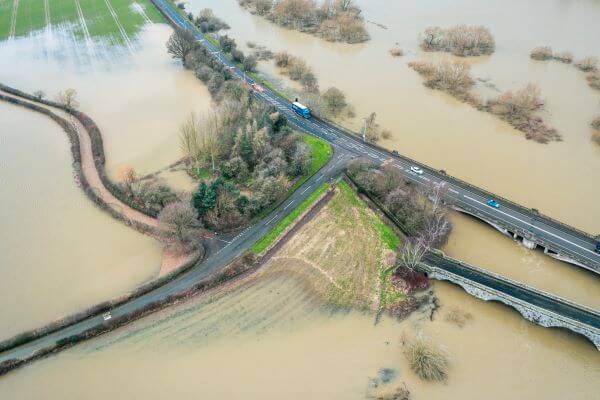Extreme weather – the cost to farmers

With UK weather becoming increasingly unpredictable, farms should be prepared for all eventualities from snow to ice, wind, flooding and heatwaves.
Extreme weather can be a major threat to livestock but also to buildings, so having robust insurance and risk assessments in place is vital.
Even the best-engineered buildings can struggle when nature does her worst, so it’s important to take the necessary measures to ensure they are fit to cope with things like snow load and high winds.
While it has been mandatory since 2014 for all fabricated steel structures to be CE marked, which should ensure that buildings are fit for the geographical areas in which they’re situated, we all know that farms are dotted with old and historic buildings that have seen better days.
Creating a checklist and dealing with problems on a continuing basis could prevent bigger costs later on.
Measures that will help include:
Carrying out visual inspections at least once a year and keeping a building maintenance plan. Checking buildings and rooves are structurally sound, particularly load bearing parts like the gable ends. If not, insurers are unlikely to provide cover. Misrepresenting a risk could result in the claim being voided and the premium retained anyway.Carrying out essential work as soon as possible – blocked gutters, drains and downpipes, general cracks and leaks.Implementing local and large-scale flood defences such as ditching, barriers and automated air bricks. It’s also worth keeping up to date with local planning and flood alleviation schemes.Regularly inspecting trees at risk of wind damage, especially those near buildings or machinery.Ensuring pipes and header tanks are insulated and keeping heating switched on in unused buildings to help prevent freezing.Removing heavy snow from rooves to prevent them from collapsing.Keeping on top of general checks and repairs relating to things such as chimneys, boiler servicing and oil levels.
Carrying out emergency measures and repairs when extreme weather has hit can be dangerous. If removing snow and ice from rooves, for example, never work alone, secure ladders properly, and be mindful of power lines.
Insurance can be tailored to cover machinery, produce, farm buildings and livestock that all may be damaged or injured by extreme weather. Specific covers that could be helpful include storm, hail, weight of snow, flood, escape of water and or fuel and cover for increased cost of working. Some brokers or other insurance providers will also be able to include additional covers like tree removal costs or loss of metered water.
Think about visitors and employees too
It is not only property which can be damaged in extreme weather, don’t forget to include the risk to people, including visitors as well as employees.
Some steps to take include:
Clear signage and supervision so visitors don’t wander into hazardous areasThe removal of any tripping hazardsOn-site first aid stationCovid-19 safety measures including hand sanitiser and information signsGritting pathways in icy or wet conditions.
The right types and levels of cover, along with a risk aware approach, can make an important contribution in reducing business risk in these challenging times.
For more information visit www.aplan.co.uk/rural.







